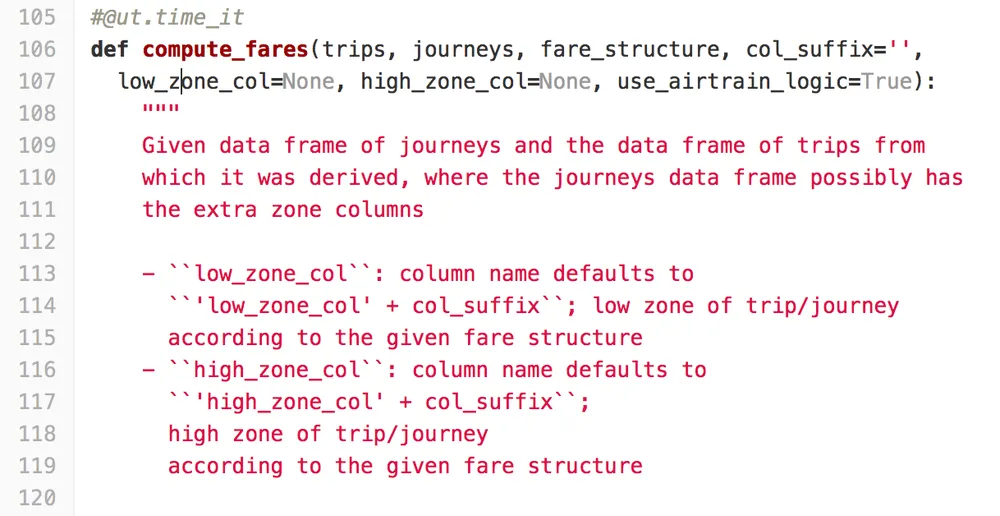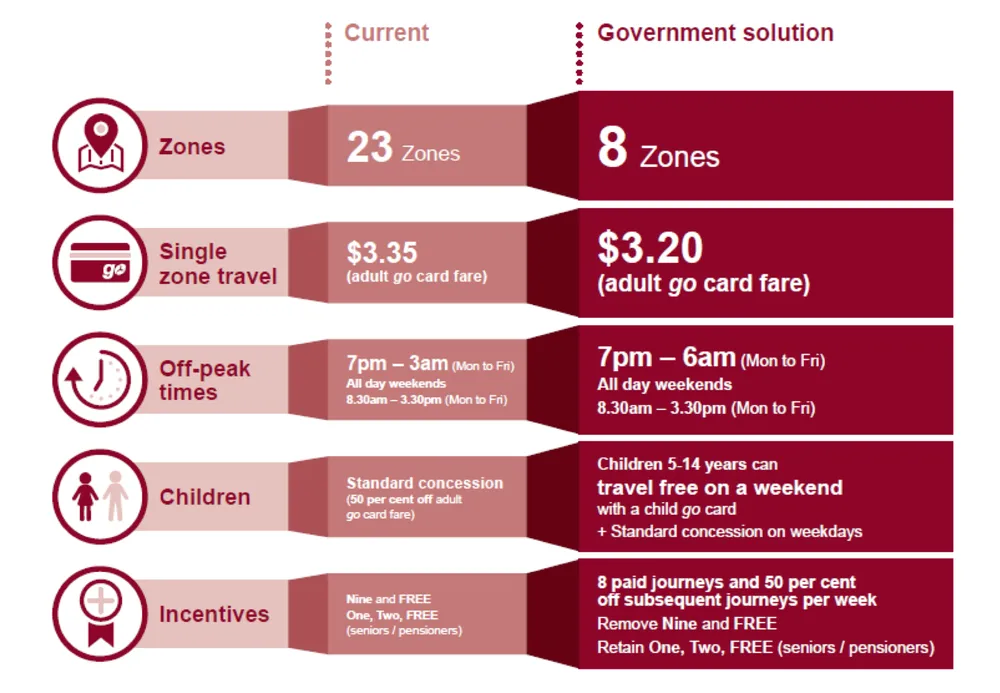South East Queensland Fare Study
In 2016 TransLink of Australia asked us to help them overhaul their region-wide public transport fare structure. They wanted to make it fairer, more affordable, and attractive to new customers but were unsure how to profile the many alternative fare structures they had in mind.
To tackle that challenge we created SEQFS, a Python 3 software package that combines historical ridership microdata with a transport economics model to simulate changes in demand and revenue in response to changes in fare structure.

Using SEQFS, Translink could explore the demand and revenue impacts of dozens of alternative fare scenarios stratified by user type, geography, time of travel, and so on. This data-driven testing allowed them to settle with confidence on a new and simpler fare structure for 2017.

 MRCagney Works
MRCagney Works